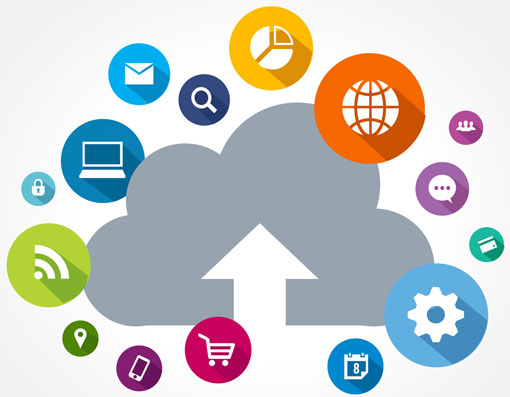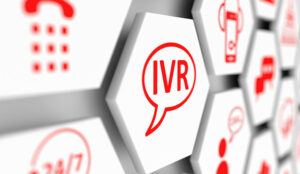Our panel of experts go back to basics and explain everything you need to know about using outbound text messages for customer service.
How are outbound text messages generated and managed in the contact centre?
SMS can be triggered automatically based on the call disposition
SMS can be triggered automatically based on the call disposition.
For example, abandoned in queue – generate an SMS to say ‘We noticed that you didn’t manage to speak with us today, would you like us to arrange a callback?’
Generating SMS requires a campaign manager interface
Generating and managing SMS in the contact centre requires a campaign manager interface similar to any outbound dialling campaign solution.
Any solution should include:
- Structured access to the SMS gateway that will send the SMS messages.
- Identifier as a from/ reply to address to define what the recipient sees as the sender of the SMS. This can be either a mobile number or an 11-character alphanumeric string, e.g. name of organisation. Using an identifier acts to introduce and identify yourself so that any recipient knows who is contacting them.
- Campaign management area – defining the time and reason for the broadcast.
- Data integration – the solution will either be fully integrated using APIs or it will receive CSV files from a third-party solution such as your customer relationship management (CRM) system.
- Broadcast or two-way integration with your case management – moves SMS from broadcast to an integrated communication method.
- Reporting – ensure that you can track your metrics, sent, delivered and read. Use the outcomes to streamline your messages and improve customer retention.
SMS Bulk Upload
SMS can also be sent via Bulk Upload, meaning that you only need to create one message that you can send to a large customer base in minutes, ensuring consistent branding.
You can also personalise the message to use the customer’s details using placeholders.
An automated dialogue engine allows for two-way communication
Text messaging can also use an automated dialogue engine for two-way communication and issue management.
Once a customer is authenticated, identity verified and consent granted, the channel is automatically activated.
Through smart analysis and intelligent logic, a platform can support many customer interactions, with agent intervention available should any predefined triggers apply.
Outbound messaging and telemarketing
This article specifically refers to using outbound text messages to improve customer service. Below is some general guidance on how and when outbound text messaging may be considered telemarketing.
Can you please clarify the opt-in requirements for any SMS campaigns?
Unsolicited direct marketing via SMS and electronic mail applies to individuals. It can only be used if the individual has consented to this type of communication.
The only exception to this would be the rules on a soft opt-in, which say:
Direct marketing via electronic mail can be sent where:
- The contact details of the individual have been obtained in the course of a sale/negotiation for the sale of a product or service
- The direct marketing is in respect of similar products and services
- An individual is given a simple means of refusing further direct marketing on every subsequent message
Can you clarify if a business will need the opt-in for SMS for admin purposes?
It is important to understand that regulations apply only to direct marketing.
As such, an opt-in for SMS for admin would not be required (although you may have to check any s10 requests from individuals asking you to not process their data under the DPA).
But it is essential that an admin SMS does not contain any marketing (including aims and ideals of the organisation), as this would be caught by the regulations.
For more information, see our article FAQs – Are You Staying on the Right Side of the Law?
How can outbound text messages improve customer communication?
Texts help to maintain regular communications
Texts help to maintain regular communications in a manner which is both instantly visible to recipients and user friendly.
They are quick and easy to produce and receive. For example, you can send text messages to remind tenants about outstanding payments and keep up interactive communication.
Channel shift can help simple queries to be resolved
Outbound texts can also be used as a cost-effective channel shift method.
For example, sending texts can help with queue management when someone calls in to change their address but advisors are busy.
If they are calling from a mobile phone, some systems can send a text message with a link to the appropriate web form for them to fill in.
Improve answer rates with an initial SMS to let customers know you’ll be calling

Many customers will ignore calls if they don’t recognise the number, but sending an initial SMS to let customers know that you’re going to be calling will increase the contact rate.
SMS is often used in this way to ‘warm up’ the customer or to solicit a call-back from customers at a time convenient to them.
If you’ve been unable to reach a customer after several calling attempts, a ‘final contact’ SMS can also help to connect you.
Keep customers updated about their order status
Outbound text messages can enable value-added services, such as updates on an application, order status or renewal updates, keeping the customer aware and feeling more in control.
Text messages can also be sent to confirm appointments, reducing the number of no-shows to meetings.
Most text messages are read within 30 seconds
SMS has a huge read rate, so you are more likely to have your message seen.
- Over a third of adults turn over and check their phones within 5 minutes of waking up and may check their phone up to 200 times a day. (Deloitte, Mobile Consumer 2015: The UK Cut)
- The majority of SMS are usually read within 30 seconds and have an open rate of 98% (Dynmark Mobile Intelligence Review)
SMS can be used in a 2-step verification strategy to increase security
SMS messages can also be used to help authorise payments.
They can be used via a 2-step verification strategy to increase security.
Collecting feedback and sending out surveys
SMS messages can be used to collect feedback and surveys about customer service. You can use the responses to improve your future campaigns.
This information can also give you the opportunity to provide assistance before an individual makes an official complaint.
Outbound alerts can keep customers informed and prevent a spike in calls
Using outbound alerts to inform customers of an electricity outage (or similar widespread issue) and expected downtime can allow a company to take proactive action to address this issue.
This keeps the public informed, reduces the chances of a sudden demand peak in the contact centre, and frees up agents to focus on more complex concerns.
Quickly and simply acknowledge a customer action
SMS can also be sent in acknowledgement of a customer action.
For example, “thank you for your order/ deposit /payment / reservation/ parking / ticket/ pin number resets/ insurance claim submission”
Help prevent fraud by alerting customers about current transactions

Text messages can also help with fraud prevention.
For example, “The following transactions are in process, if you did not authorise these please call”.
Things to watch out for when implementing outbound text messages
Bombarding customers with messages that aren’t relevant to them
Outbound text messaging should never be seen as just another channel to send spam marketing.
Any business can lose a lot of brand goodwill by abusing the use of a personal phone number.
Making sure you are compliant with regulators’ rules
You must always ensure your recipient will appreciate a text message and that you will be compliant with regulators’ rules.
Research your customers’ preferences beforehand.
Sending messages containing sensitive or personal information
Never send anything that could contain sensitive or personal information – and always consider the data protection implications.
A GP practice might use SMS to remind the patient of their upcoming appointment, but it should never contain any personal information.
Overlooking the benefits of reporting
You should make sure your SMS portal has a report facility, so you can review how many texts are sent successfully and analyse live delivery statistics.
This will help you to use these figures in the future for more efficient campaigns.
Using “text speak” instead of proper English
SMS is seen as a casual method of contact.
But remember that the correspondence is still a representation of your company – if u spk like ths in ur msg it’s nt v. prfssional.
Failing to make your customer aware of your short code
You need to ensuring that your customers are aware of your short code (or shared short code).
[Short codes are special telephone numbers, shorter than full telephone numbers, designed to be easier to read and remember than normal telephone numbers.]
This can then be used if they need to text back to allow a two-way conversation.
Overwhelming the customer with complex instructions
Avoid any complex instructions.
Text messages are best suited for simple, easy-to-understand instructions, acknowledgements or requests.
Sending text messages late at night or early in the morning
Frequency and time of day are also important considerations.
Be sure to match applicability to customer segments, and avoid inappropriate times such as late night and early morning.
High frequency is only appropriate for specific events such as a delivery progress or service call.
Text message etiquette – What are the do’s and don’ts of sending outbound text messages?
Do – Adopt a precise and targeted approach
Do adopt a precise and targeted approach when sending text messages to ensure recipients find them relevant to them.
Precision contact can help target your audience at the right time, with the right message.
Don’t – Send a text message to deal with complaints
A phone call is always best when dealing with a complaint.
This is because your meaning cannot be misinterpreted and it allows the recipient to respond and settle things to mutual satisfaction.
Do – Be mindful of Ofcom
Be mindful of Ofcom and any relevant legislation both within the country you’re operating in and also where your customers are.
A text is classed as a contact in the same way that a telephone call is, so always make sure that you’re not in breach of any regulations.
Certain industries have their own regulatory requirements too.
Don’t – Reveal a customer’s full account number
Never give out the full account number or any other personal details.
It’s good practice if you need to discuss something relating to the customer’s account to just use the last few digits and say “your account ending in ‘XYZ’” rather than revealing the full number.
Do – Give customers the option to opt out

Ensure you manage your opt-out process and provide a ‘Text STOP to XXXX’ option for customers to use.
Do – Use the customer’s name
A personalised message can improve the response rate of a message, if the individual believes that it is aimed solely at them.
Do – Give customers a special offer if they respond
Try to get your customer to engage and not ignore or delete your message!
Give customers an attractive offer to call back, or show the customer why it is in their best interests to respond.
For example, timed offers could generate excitement and hype.
Do – Ensure that you are available to respond
Ensure that you are available to respond if the customer engages.
Perhaps transfer to an alternative method of communication after a positive response.
Don’t – Send more than 4 texts a month
You don’t want your customer to think they are being bombarded with messages.
Find the right balance, with no more than 4 text messages a month.
Do – Make it easy for a customer to action your request
If the message contains an instruction to do something, it needs to be easy for the customer to follow through with that action.
An alert sent to a customer advising them to top up their electricity payment, for example, should include details of the telephone number they will need to dial and even a link to a web app that will allow them to instantly log in and make a payment.
This way you allow the customer to decide which channel they want to use to interact with your business.
How much should I budget?
You need to consider the ongoing costs as well as the initial system deployment
There are two kinds of costs:
- The ongoing costs of sending SMS messages
- The initial system deployment and integration
You can purchase bulk SMS message contracts to keep the running costs down.
The more complex element is the cost of integrating the platform into your business process software, such as CRM or appointment systems.
Some cloud contact centres solutions include outbound SMS as standard

Some cloud contact centre solutions will include outbound SMS as standard within the package.
Also, because cloud is pay-as-you-go (Opex rather than Capex), there’s no costly maintenance or set-up costs.
Some companies offer a tiered rate card dependent on volume
Payment is usually per 1,000 messages and costs range from 6p to 2p based on the volume and commitment terms to which you contract.
Some companies offer a tiered rate card dependent on volume, so the more SMS you send, the cheaper it becomes.
You should also ensure that you are aware what your provider charges you for. Do they charge for every SMS attempt, or only for every delivered SMS?
Set-up costs are usually in the region of £1,000
Set-up costs you should also keep in mind include the cost of setting up the administration of your campaigns and the integration with your systems.
Prices are variable, but are usually around £1,000.
However, some companies do not charge any set-up or management fees as they are self-service and are managed by the customer uploading files using the portal or via an API.
Additional costs
Additional costs can include:
Advanced Home Locator Response (HLR)
The home location register (HLR) is a central database that contains details of each mobile phone subscriber that is authorised to use the GSM core network (wiki).
Dedicated short codes & virtual long numbers
A virtual mobile number (VMN, SMS Long Number or MSISDN) enables your business or organisation to receive inbound SMS text messages from any mobile user on any mobile network, worldwide.
- Short numbers have higher monthly fees (circa £1,000 per month) – they are easy to recognise and easier for customers to use. These are often used by marketing campaigns. Similar set-up fees apply.
- Long numbers are more cost effective at approximately £10 per month. Similar set-up fees apply.
Monthly platform fee
The monthly platform fee is the cost to use the SMS provider’s platform.
Paying for access and maintenance and is usually linked to a service level.
How do you use outbound text messages in your contact centre?
Put your thoughts in an email to Call Centre Helper.
With thanks to:

- Anthony Stephenson at Enghouse Interactive
- Lucille Needham at Genesys
- David Ford at Magnetic North
- Lynley Meyers at Netcall
- Martyn King at Nexbridge
- Ken Reid at Rostrvm
Author: Megan Jones
Published On: 1st Jun 2016 - Last modified: 17th Dec 2024
Read more about - Technology, An Introduction to Contact Centres, Customer Service, David Ford, Enghouse Interactive, Genesys, Intrado, Ken Reid, Nexbridge, Outbound dialling, Rostrvm





















